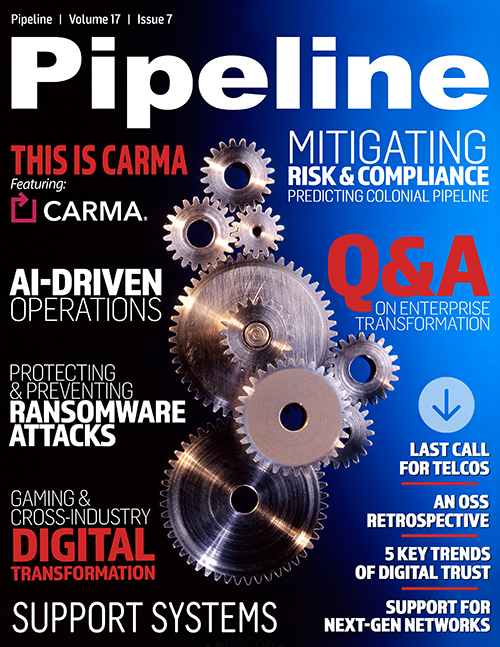Dynamic 5G Networks Demand AI-Powered OSS
Domain orchestration
The dynamic nature of 5G services requires CSPs to expand beyond traditional practices for monolithic systems with a new operations approach. Networks must divide into self-sufficient operational domains with autonomous operations. Each domain, such as Open RAN, transport networks and core networks, must combine dynamic OSS and orchestration microservices to address their specific needs.
Cross-domain service orchestration provides smooth integration for diverse network domains (technology, geo and vendor), including pre-5G and 5G networks. It provides service lifecycle management across all hybrid network domains, including legacy networks, SDN networks, cloud environments and NFVI environments.
This domain orchestration approach is ideally suited to accommodate the emerging 3GPP standards for network slice management.
5G network slicing
A recurring theme concerning the transition of networks to 5G is the concept of dynamic flexibility. 5G network slicing is a crucial technology in providing this capability. CSPs can seize 5G business opportunities by allocating network slices to serve the specific needs of a service or vertical market. However, vertical markets can have some of the most stringent and fluctuating demands for high network performance of any type of organization. Network slices must therefore support provisioning and scaling on demand to meet the dynamic needs of enterprise verticals. The only technology with the ability to provide the necessary speed and precision for network slicing is E2E automation.
Orchestration and OSS systems must support the emerging service, network and sub-network management functions from 3GPP as a baseline to automate network slicing on demand. Functions for customer service management and network service management are required for dynamic orchestration of network slicing across multiple domains. Dynamic instantiation and lifecycle management of slices within each domain requires network slice subnet management.
Open OSS and BSS integration
The demands for speed and flexibility from heterogeneous networks require open integration between OSS and BSS systems. Industries are incorporating new technologies to create smart factories, smart cities, smart grids and autonomous vehicles. Consumer services like smart homes, AR, VR and advanced media for gaming and entertainment are growing in popularity and demand. This new generation of digital services is made possible through cloud, IoT and 5G technology and creates a completely new set of monetization opportunities. However, discussing revenue management without service management misses one of the most fundamental principles of the modern IT landscape: integration.
Legacy systems are significant obstacles to innovation. For example, a CSP will face a multitude of technical and business problems in attempting to rate, charge and bill a new service model with an existing legacy system. The tightly coupled architecture of most legacy systems creates severe bottlenecks and lacks the flexibility to adopt new models. Modernized revenue management must utilize a single platform with open OSS integration to provide a central source of information for traditional, digital and partner-based services.
How can this integration be achieved? Digital services models can use cloud-based online revenue management. Cloud environments help foster open architecture with standardized APIs in a partner ecosystem for greater OSS and BSS integration.
Advanced OSS
The world is growing smaller because its networks are growing larger. OSS in the 5G era must be AI-driven and integrated with BSS for CSPs to take full advantage of the power, speed, scale and connectivity of 5G networks. A separate approach to service management and revenue management is an outdated method and burdens CSPs with deficient operational efficiency, poor customer experience and lost revenue. Service management and revenue management should utilize a common software framework with cloud-native microservice-based architecture, DevOps methodology, E2E orchestration, domain orchestration, 5G network slicing, and open integration. CSPs will consequently be able to optimize customer experience and dynamically streamline the management of new revenues.



















